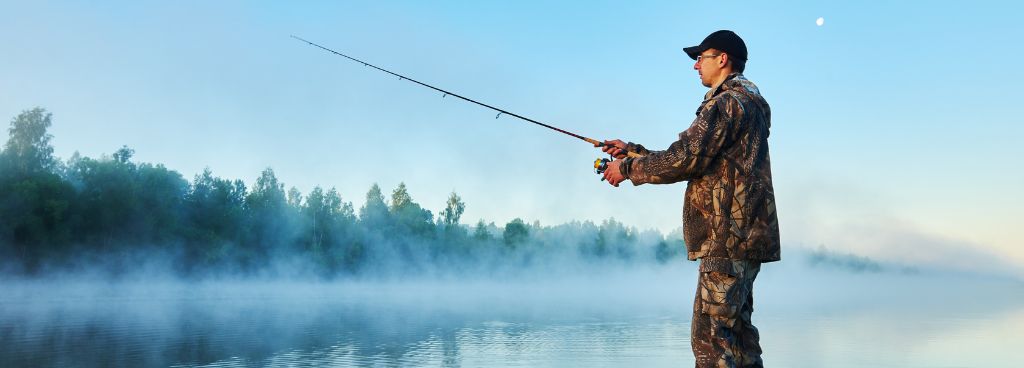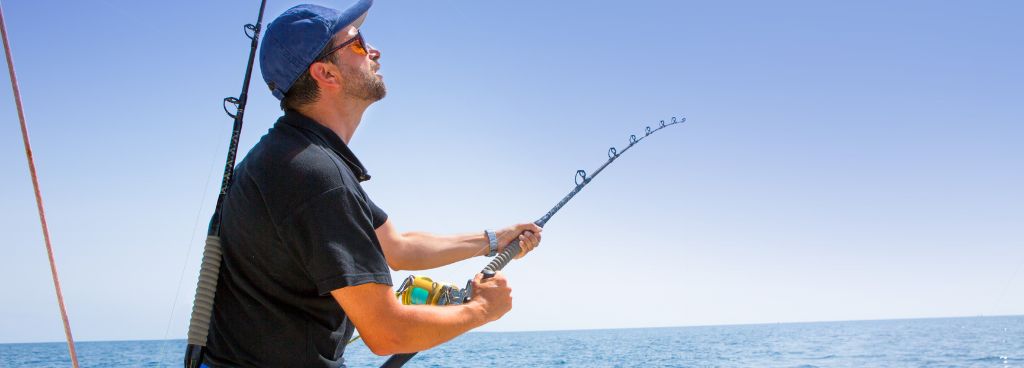Stories Worth Reeling In...
Last Updated on August 7, 2023
Are you an avid angler, constantly seeking thrilling fishing experiences? Do you find yourself torn between the vastness of the ocean and the tranquility of freshwater lakes and rivers? If so, you’re not alone! Many anglers face the dilemma of choosing the right fishing rod for their angling adventures.
By the end of this post, you’ll have a deeper understanding of which rod best suits your fishing preferences, target species, and chosen fishing locations, ensuring that every cast leads to a memorable and rewarding angling experience. Let’s dive in!
Table of Contents
Freshwater fishing rods are specialized fishing implements carefully crafted to cater to the unique demands of fishing in lakes, rivers, and other freshwater bodies. These rods are typically lighter and more sensitive than their saltwater counterparts, as they are designed to handle the lighter weight of freshwater fish species.

Freshwater fishing rods are engineered with specific attributes that complement the habits and behavior of freshwater fish. Their lighter weight and increased sensitivity allow anglers to detect even the subtlest of bites, essential when pursuing species that exhibit delicate strikes.
Their agility and sensitivity help anglers finesse their presentations and navigate tight fishing spots with ease.
Saltwater fishing rods are specifically designed to tackle the challenges posed by the corrosive and demanding conditions of ocean fishing. These rods are built using materials and components that offer superior durability and corrosion resistance, ensuring they can withstand the harsh effects of saltwater exposure.
Saltwater rods are typically sturdier and more robust than their freshwater counterparts, allowing anglers to battle larger fish species found in the open seas.

They often incorporate advanced composite materials like graphite, fiberglass, or a combination of both, which ensures the rods can endure the corrosive effects of saltwater over time. Saltwater rods feature high-quality reel seats, guides, and other components made from stainless steel or other anti-corrosive materials to maintain their functionality and appearance in the harsh marine environment.
Their robust construction and increased power allow anglers to cast over long distances and handle powerful fish with ease. However, using them in smaller inland water bodies might result in reduced sensitivity, making it harder to detect subtle strikes from more delicate freshwater fish species.
There are some specialized sea float rods available, but a bass rod or a spinning rod of 10 feet in length will suffice for the odd float-fishing expedition. Mullet is a fantastic target for coarse fishing rods.
Saltwater rods require extra care due to the corrosive nature of salt. After fishing in saltwater, thoroughly rinse the rod with freshwater as soon as possible to remove any salt residue. Pay close attention to the reel seat, guides, and other metal components, as they are particularly susceptible to corrosion.
Use a mild detergent to clean these areas if necessary, and ensure they are completely dry before storage. Periodically inspect for signs of rust or corrosion, and address any issues promptly to prevent further damage.
Regular inspections are essential to catch potential problems early on and prevent them from escalating. Check the rod guides for any signs of wear, such as cracks or chips, and replace them if needed. Inspect the rod blank for any nicks or scratches, as these can weaken the rod over time.
Pay attention to the reel seat and handle grips, as loose or damaged components can impact the rod’s performance. Address minor repairs immediately, and consider professional servicing for more significant issues to ensure your rods remain in top condition for many fishing seasons to come.
In conclusion, understanding the differences between saltwater and freshwater fishing rods empowers us to choose the ideal rod for each angling pursuit.
So, whether you’re setting out on a serene freshwater adventure or tackling the challenges of the open sea, let your choice of fishing rod enhance your angling experience and pave the way for countless fishing memories to come. Happy angling!